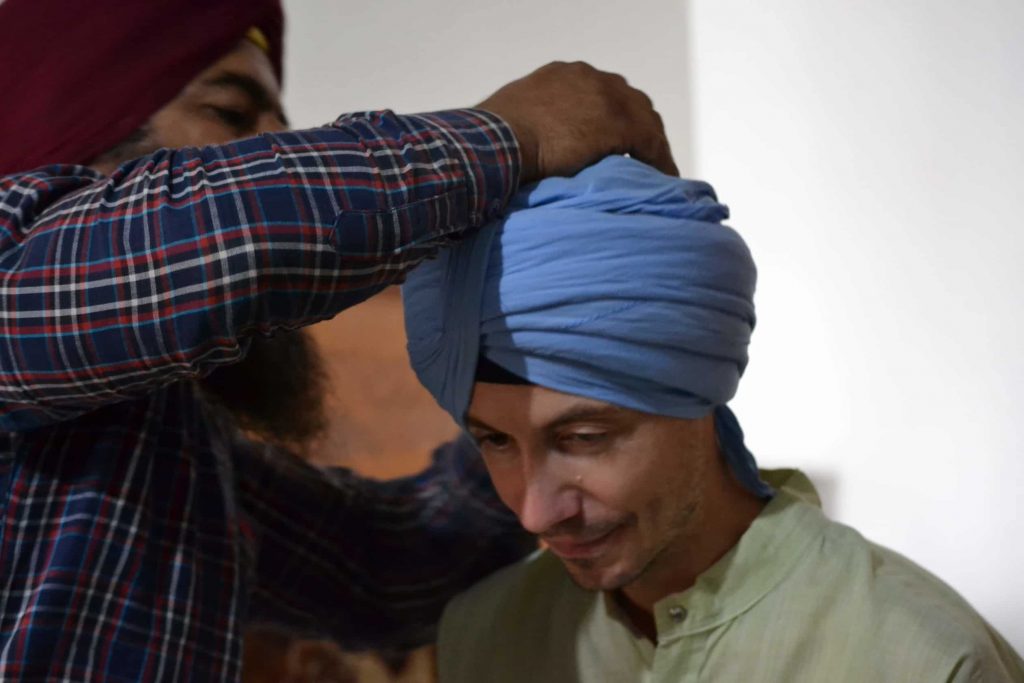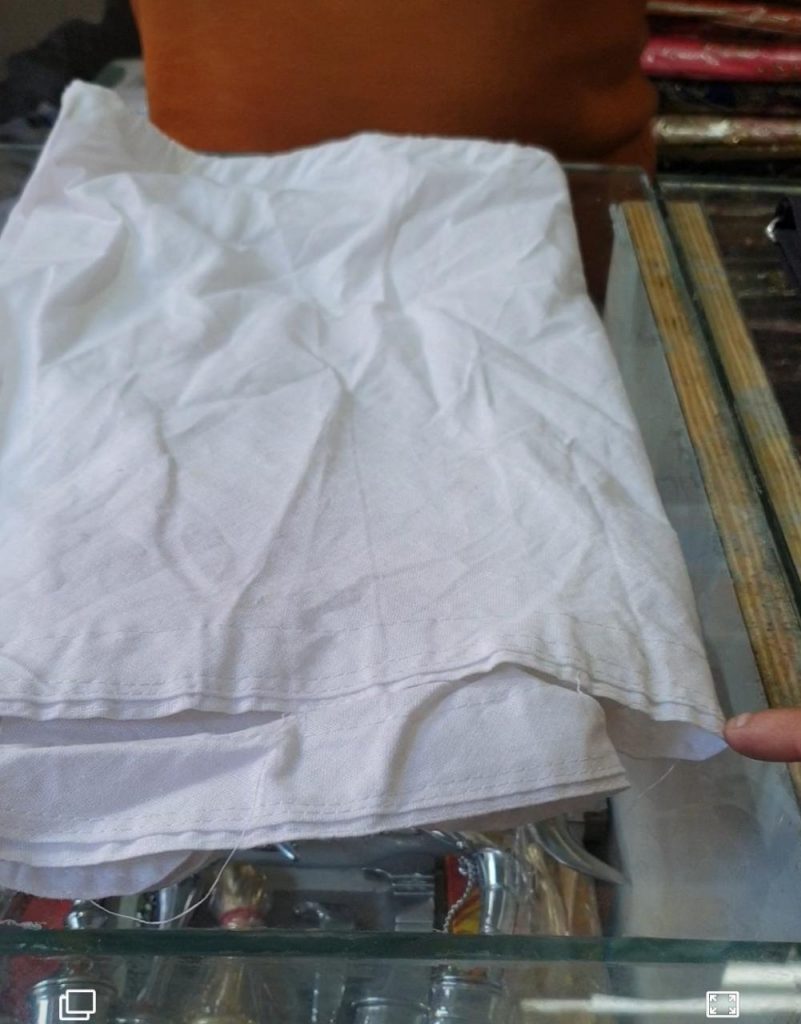- Use promo code "CPT10" & get 10% off on tours
- traveldesk@cityonpedals.com
What Do Sikhs Wear And Why – The Story of 5 Ks

The Sikh religion was founded in Northern India in the fifteenth century by Guru Nanak Dev Ji and is the world’s fifth-largest religion with 25 million adherents worldwide. The religion believes in one God, equality, freedom of religion, and community service. Sikhs believe in three basic principles; meditating on the name of God (praying), earning a living by honest means as well as sharing the fruits of one’s labor with others. Sikhism rejects caste and class systems and emphasizes service to humanity. The universal nature of the Sikh way of life reaches out to people of all faiths and cultural backgrounds, encouraging us to see beyond our differences and to work together for world peace and harmony.

The Sikh religion is strictly monotheistic, believing in one supreme Creator, free of gender, absolute, all-pervading, and eternal. Sikhism views life not as a fall from grace, but a unique opportunity to discover and develop the divinity in each of us. Sikh history features countless examples of Sikh Gurus and their followers making tremendous sacrifices for the cause of religious freedom and justice.
The Initiation Of Khalsa
In 1699, the tenth and last living Sikh Guru, Guru Gobind Singh, summoned his followers to the town of Anandpur in Punjab; over 80,000 came. According to history, Guru Gobind Singh appeared before his people, flashed a naked sword, and demanded a head. He repeated his call until five Sikhs volunteered. These five individuals came from different parts of India and from different castes. To these five, and subsequently, too many others on that historic day, Guru Gobind Singh bestowed a new discipline, a creed to his Sikhs. The Guru initiated these five in the new order of the Khalsa and then, in a dramatic and historic gesture, they, in turn, initiated him. On that day, he gave the Sikhs a unique identity which includes five articles of faith which he introduced for several reasons:
- Adopting these common symbols would identify members of the Khalsa
- Because all members of the Khalsa wear the 5 Ks the members of the community are more strongly bound together
- Each K has a particular significance
The Meaning Of Five Ks
The 5 Ks are taken together to symbolize that the Sikh who wears them has dedicated themselves to a life of devotion and submission to the Guru. The 5 Ks are 5 physical symbols worn by Sikhs who have been initiated into the Khalsa. They are:
- Kesh (Uncut hair)
- Kara (a steel bracelet)
- Kanga (a wooden comb)
- Kachera (cotton underwear)
- Kirpan (steel sword)
1. Kesh (Uncut Hair)
It is a highly visible symbol of being a Sikh. The uncut hair symbolizes the adoption of a simple life and denial of pride in one’s appearance. Throughout the history of Sikhism hair (kesh) has been regarded as a symbol both of holiness and strength. It is believed that the head of a devout Sikh is an offering to the Guru and long hair is proof of the Sikh’s devotion and a sign of a Sikh’s commitment and devotion to his/her Guru. According to Trilochan Singh in The Turban and Sword of the Sikhs, Sikhs live in the physical image of the Guru, and since the Gurus kept long hair, so do Sikhs. This may be as a tribute to the Gurus’ life or as a way to live in line with the Gurus’ lifestyle. These are tied neatly with a turban over the head which is again a symbol of a true Sikh. Sikh women are just as forbidden to cut any body hair or even trim their eyebrows, as Sikh men are forbidden to trim their beards.

2. Kara (A Steel Bracelet)

Kara is a symbol of unbreakable attachment and commitment to God. It is a constant reminder of the Sikh’s mission on this earth and that he or she must carry out righteous and true deeds and actions, keeping with the advice given by the Guru. The round shape of the Kara signifies that God has no beginning and no end. Being also synonymous with Kari – a link, it is a symbol of permanent bonding to the community – being a link in the chain of Khalsa Sikhs. This Kara is made of steel, rather than gold or silver, because it is not an ornament to be worn for fashion rather it is considered as Holy and sacred which is worn as a duty towards Sikhism.
Whenever you get time to plan a tour to the city of Golden Temple, you will notice this and all other signs of Sikhism during a walk through the road.
3. Kanga (a wooden comb)

Again a wooden comb that is supposed to be kept with the hair all the times, signifies that the life of a Sikh should be tidy and organized. It symbolizes a clean mind and body since it keeps the uncut hair neat and tidy. This does not conflict with the Sikh’s aim to move beyond bodily concerns; since the body is one’s vehicle for enlightenment one should care for it appropriately. The Kanga is tucked under the Rishi-knot – a knot at the center of the head to keep it firm and in place. It is to be used twice daily to comb and keep the hair in a disentangled and tidy condition. It represents the importance of discipline and cleanliness to a Sikh way of life and is used to keep the hair healthy, clean, shining and tangle-free.
4. Kachera (cotton underwear)

A symbol of chastity, these are actually the pair of breeches that must be worn above the knees. It reminds the Sikhs of being faithful and also act as a reminder of etiquette, dignity, social tolerance, cleanliness, protection from carnalistic debauchery and sexual promiscuity. The undergarment signifies unity with God almighty and the household – married life and faithfulness to the person you accept as your partner in front of the Guru Granth Sahib Ji.
5. Kirpan (steel sword)
It is a ceremonial sword that symbolizes spirituality and is considered as a metaphor for God. This can be used in the struggle against injustice and in the defense of the weak. There is no fixed style of Kirpan and it can be anything from a few inches to three feet long. It is kept in a sheath and can be worn over or under clothing.

It is said, “When you have faith, you don’t need any absolute reason for doing anything”. For a Sikh, the fact that the Guru has instructed the Sikhs to wear the 5 Ks is an entirely sufficient reason, and nothing more needs to be said. The symbols have become greatly more powerful with each passing year of Sikh history. Every Sikh remembers that every Sikh warrior, saint, or martyr since 1699, and every living member of the Khalsa, is united with them in having adopted the same 5 Ks.
Take a tour of the city and know more about the rituals and cultures of the land.






